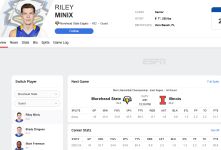Morehead State and BYU are similar offensively - both take a lot of threes (25th and 2nd in D-I, respectively, in 3PA/FGA). More importantly, both rely heavily on threes for scoring (37th and 2nd in % of total points from threes).
That sounds like a trivial distinction but I think it may be kind of important given our defensive philosophy. Rather than a 1D spectrum (more <-> fewer), I can see three types of teams when it comes to three-point shooting. Here's what I mean:
Sharpshooters (Low Attempts, High Scoring)
On one extreme, you have teams like Kentucky, Northwestern, and Virginia - let's call them sharpshooters. They all shoot a below average number of threes, but get an above average portion of their points from three. If you're data-minded, you'd probably infer that these teams make a high percentage of their threes - and you'd be right. All are top 50, and UK/NW are #1 and #4 in D-I.
Defending these teams is tough. You want to limit their threes because they're disproportionately effective, but at the same time, they're already disciplined enough to only take good threes - and thus, they likely know how to use overly aggressive closeouts as opportunities for something else.
We saw this dynamic against NW this year. Both times, we held them well below their average rate of three attempts. And they shot even better than normal on the remaining ones - 50% in the blowout at SFC, and 61% in the rematch. Our strategy didn't seem to hurt our 2P defense the first time (38%, well below their average), but did the second (53%, a bit above), and so we went 1-1 in those games despite scoring 90+ both times.
Chuckers (High Attempts, Low Scoring)
On the other extreme, you have teams like Maryland, K State, and Texas A&M - let's call them chuckers. They all shoot an above average amount of threes, but score a below average portion of their points from three. As you can guess, these teams make a low % of their threes - all 3 are bottom-100, with MD and K State being bottom-20.
Defending these teams is interesting. They shoot threes but don't make many - so do you still limit their attempts, or let them chuck? Our philosophy seems to be the former; I think this is pretty justifiable since three-point shooting is notably quite random even across a whole season. But at the same time, these teams get above-average scoring from twos and free throws; in running them off the line even more aggressively, you may be pushing them towards their more efficient shots.
We saw this in the two Maryland games. In both games, we held them well below their season average attempt rate from three, and they shot about the same (bad) both times. At home, they shot 54% from two and won; in the rematch, they shot 49% from two and lost - in both cases they were above-average from two for their season.
Balanced (High/High or Low/Low)
Morehead State and BYU both fit this bill on the High/High side. They shoot a lot of threes, and they get a lot of their point from three. IMO that lines up best with our defensive philosophy, because threes are something that they both want to do (high attempt rate) and do reasonably well (high % of points).




